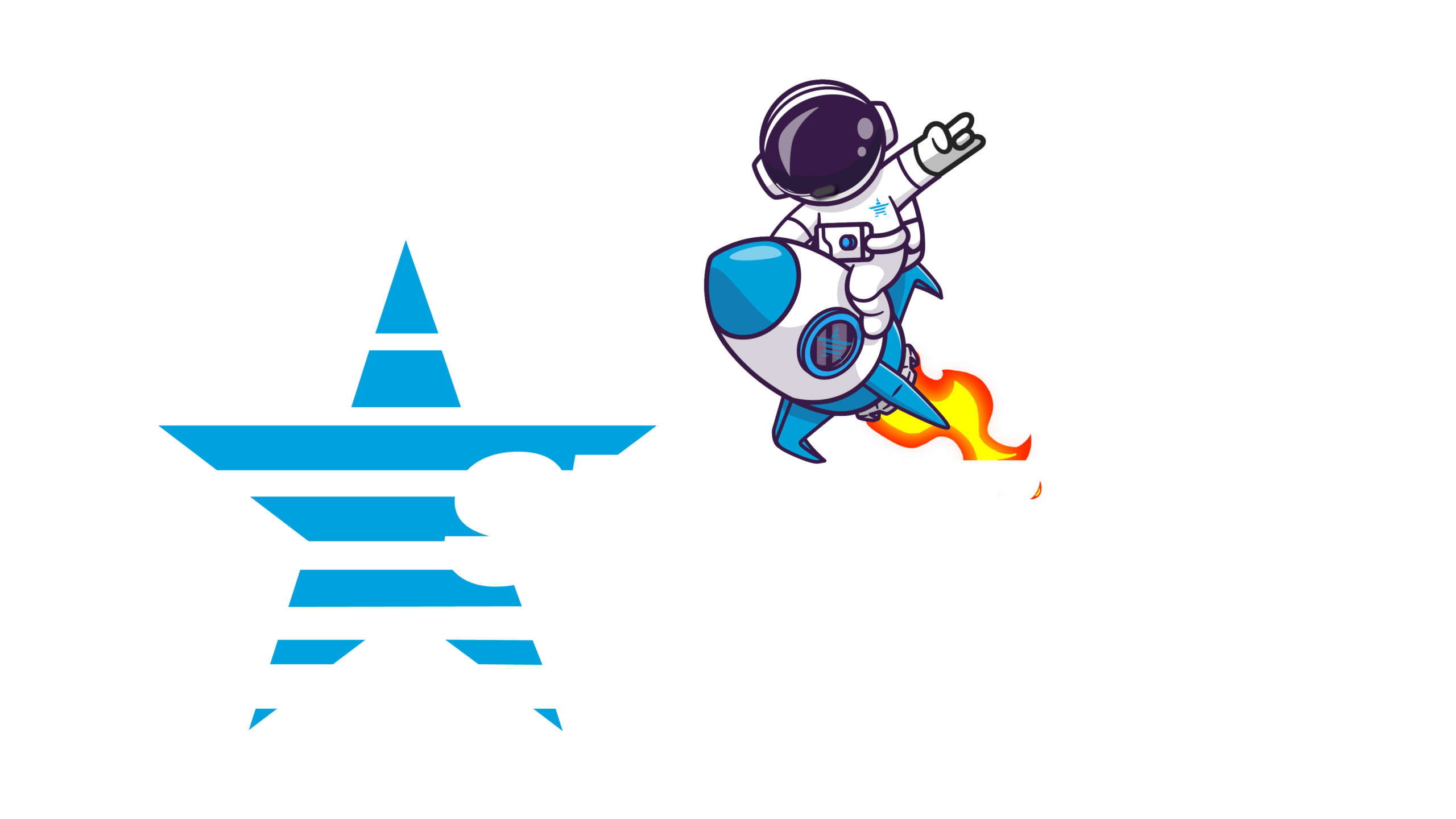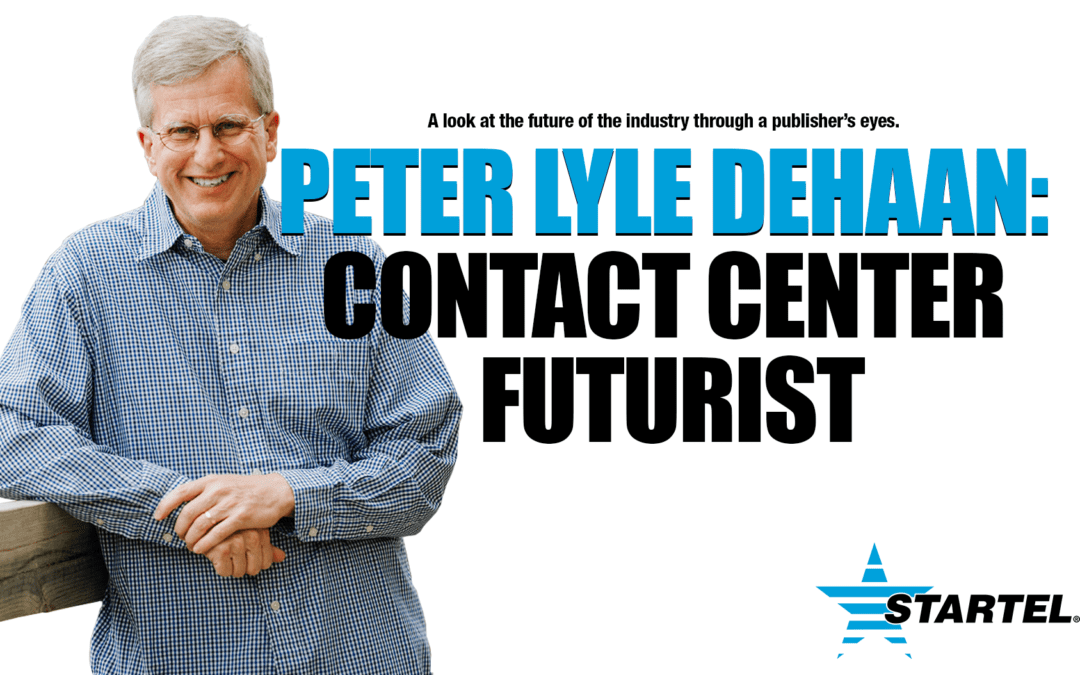
Peter Lyle DeHaan, Industry Publisher and Author
By Vince Vitale
The name Peter Lyle DeHaan is easily recognizable if you’ve subscribed to contact center magazines AnswerStat, TAS Trader, Connections Magazine or Medical Call Center News. Some might simply describe him as “That guy from the magazines!,” but for those who are more forward looking… Peter Lyle DeHaan is more than that!
You see this husband, father of two, and grandparent of five is a bit of a futurist in the industry. He’s often able to draw on his past experience while looking at current trends to make strikingly accurate predictions on the future of contact centers. Since my introduction to the contact center industry a few years back, Peter has been someone whose brain I have very much wanted to pick.
So, imagine my excitement when, while seated first class on a plane to the ATSI conference, I look up and see the TAS man himself sitting down beside me. Actually, none of that’s true. I only wish I was that cool. I haven’t flown in over 2 years, and the only time I have been in first class is while walking through it. However, it is true that I was able to pick Peter’s brain via the (albeit, less sexy) means of email. But regardless of the simple manner of my ways, “The Contact Center Magazine Guy and Industry Futurist” that is Peter, kindly obliged.
I like to ask people if they have a motto or slogan they like to think they live by and Peter’s response was, “changing the world, one word at a time.” And if you think about it Peter’s words probably have changed the world. His writings inspire an industry that could potentially have its hand in every aspect of human life.
The fact is Peter has always seemed to have his hands on the future of communication as he got his big break in a sector about as futuristic as the phone industry could get at the time.
“It all started a long time ago, 1979, I think. It happened by accident” said DeHaan.
“A paging and car phone provider hired me because I had a first-class FCC license. They also owned a couple telephone answering services. As the answering services migrated from cord boards to computer technology, they needed someone to address the technical issues. I took a liking to it, and soon the answering service became my focus,” he wrote.
Peter continued, “From there I rose into management and became a part owner, managing their multi-location network of call centers. I also worked for a time with an industry vendor. And then as an industry consultant.”
Things were certainly starting to take shape for Peter, and after over 20 years of writing, managing, and consulting for the industry, it was natural that he progressed into publishing.
“I bought Connections Magazine from its founders, Steve and Chris Michaels, in September 2001. In 2003 I launched AnswerStatmagazine for the healthcare contact center industry. TAS Trader and Medical Call Center News both came along in 2009,” Peter said.
Looking back now, it’s obvious that Peter’s industry experiences and writing background were setting him up for something special. And soon his writing on the industry began to get published.
Peter told me, “Specifically relating to the call center industry, I have written “How to Start a Telephone Answering Service” and “Sticky Customer Service.” Soon I’ll release “Healthcare Call Center Essentials,” followed by “Sticky Sales and Marketing.” I have a half dozen more titles in the works to follow these four.”
That’s some pretty serious contact center “street cred!”
There is no doubt DeHaan is one with a finger on the pulse of the contact center industry. But what does this modern age call center wiseman look to as the most significant milestones of the industry?
Peter said, “I’m sure I’ll overlook a few, but here’s what comes to mind,” he continued…
“Early in my industry tenure was the divestiture of AT&T. This sparked opportunities for the industry, especially the opportunity to move into CTI (computer-telephone integration).”
Peter is referring to the 1982 breakup of the Bell system. At the time, AT&T was the sole provider of telephone service and equipment throughout the United States. Having almost total control over the communications infrastructure for the entire country led to an antitrust lawsuit in 1974, United States v. AT&T. In an effort to avoid some of the harsher penalties being considered, AT&T proposed their own break-up in response. In a settlement that took nearly a decade to finalize, AT&T ceded ownership of the local telephone operating companies, fracturing “Ma Bell” into seven regional “Baby Bells.”
With the book value of AT&T reduced by about 70% there was a surge in competition. As part of the settlement, AT&T freed themselves from an earlier antitrust provision that prohibited them from the general sale of computers, and they hoped to outpace their competitors to become a leader in the integration of telephones with computers. They were never able to successfully follow through, but the fact that a company banned from computer sales was no longer in control of the vast majority of America’s telephone network and technology meant that the United States (as well as the rest of the telephone-answering world), were about to see some exciting changes. Without a doubt, the divestiture of AT&T was one of the things that led to the birth of contact center software and so many other communications tools that we know and use today, integrated through telephone lines across the globe.

Peter Lyle DeHaan presenting at a writer’s conference.
So, with that little contact center history lesson aside, the times – according to DeHaan – they are a-changin’!
DeHaan says, “A huge development was the rise of the internet and its ubiquitous insertion into every aspect of our lives. If I had to pick the most significant milestone, this would be it.”
Peter continues, “More recently is the opportunity to move from premise-based systems to Internet-delivered solutions. This concept has gone by various names over the years, starting with ASP (application service provider), hosted systems, SaaS (software as a service), and cloud-based solutions.”
But what of the future of the contact center industry? If you ask DeHaan, things are looking good!
“I see a bright future for the industry, limited only by our imagination and creativity,” said Peter. “Arrayed before us exists much potential. This excites me,“ he said. “Each problem we encounter today offers us an opportunity for a better tomorrow. Each time we solve a problem, implement a creative initiative, or think outside the proverbial box, we turn our call center into a better operation and raise the overall standing of the industry.” He went on, “I’d say the one thing that can bring this industry down is giving into complacency. Giving up. And giving validity to the status quo.”
Which is reassuring coming from a guy who has ridden the best and the worst of the contact center industry’s ups and downs including the recent pandemic. For those wondering what they could be doing to prepare for the future.
Peter says the answer is simple, “Invest in people, for frontline staff is our essential difference and our future distinction. Then support them with the best technology tools possible.”
It’s easy to see why Peter would make this point. Ask anyone in the business what their biggest frustration of the pandemic was, and they will tell you it’s “filling seats,” which DeHaan says is an issue that is going to be around for some time. “This will continue as an issue into the future. This is a multifaceted concern, however. First is finding qualified people. Second is keeping them.”
DeHaan says appropriate compensation is key for both issues.
“As a labor-intensive industry, we know how quickly unchecked labor costs can ruin a business. Yet in our desire to remain viable, we’ve collectively kept hourly rates and benefits low. We need to figure out a way to better compensate our people and run a profitable business while doing so.”
But one thing is for sure, business for those who can keep agents on the phones is booming. In many cases, contact centers are benefiting mightily from the new norms of the work-life following the COVID-19 Pandemic. And if you’re like many who are thinking about getting a piece of that “contact center pie,” Peter is the perfect guy to ask for contact center start-up advice. But his approach, at first might seem a little harsh.
He replied, “In my book How to Start a Telephone Answering Service, I open by trying to talk people out of starting one. I even have that warning in the book’s online description and back cover copy. Yet for those who want to press on, I give them a succinct roadmap on how to do so.”
Well, that’s a little discouraging don’t you think? But his reasons, as you’ll find, have more to do with the type of person you are rather than the risks involved. And that probably has a lot to do with why Peter is so positive about the future of contact centers and the industry as a whole.
“What makes a startup less risky today than what it once was is that you no longer need to make a five or six-figure capital investment in technology. With the cloud-based solutions out there, you can pursue a much more affordable, pay-as-you-go strategy.” DeHaan continues, “This removes us from embarking on a capital-intensive and labor-intensive business to only needing to deal with a labor-intensive aspect. This is my key piece of start-up advice–aside from not doing it–that is.”
And for those of us who are not starting up per se but instead taking over the reins. DeHaan says it is a delicate dance when it comes to business succession planning.
“I don’t recall the precise statistics for all business concerns,” said DeHaan. “But the success rate of transitioning a family-owned business to the second-generation isn’t good, and it’s much worse transitioning to the third.”
“Those who do so successfully don’t just give ownership or management to the succeeding generation. Instead, they make their offspring earn it each step of the way. This starts by answering calls and on the shifts no one else wants. Often astute owners require their children to first amass relevant experience outside the industry and/or attend business college or obtain some other suitable, applicable degree. Though these steps don’t guarantee a positive outcome, they do decidedly tip the balance in favor of the next generation’s success.”
Some great bits of advice from a man who certainly has his finger on the pulse of the industry. If you are interested in finding out more, check out a few of his websites: Peter Lyle DeHaan, Peter DeHaan Publishing & Connections Magazine.
In our next blog… The great outpouring of contact center knowledge from Peter Lyle DeHaan does not end here. Whether you are a call center startup or a 2nd generation owner one thing you are probably doing on your own is your marketing. A huge part of that marketing is writing, and writing is not easy for everybody. Lucky for you we’ve put together a list of writing tips from the man who is trying to change the contact center industry one word at a time. If you’ve been tasked with tackling your contact center’s blog or website writing, you won’t want to miss this!



Recent Comments